The mountains are not only daunting in their height and magnitude. They also pose a daunting scientific challenge to those who study them. In everyday life, rock layers are laid down flat in horizontal layers one on top of the other. Oldest layers at the bottom, youngest at the top. Now, this is definitely not what we see in the mountains!
The views expressed in this article reflect those of the author, and not necessarily those of New Creation.
Mountain ranges are a jumbled-up mess of folded, disjointed, and fractured layers of rock. These layers of sedimentary, metamorphic, and igneous rocks tower above the rest of the world on high elevation plateaus. The characteristics of mountain ranges include volcanic intrusions, erosional surfaces, and the marine fossils found scattered over their highest peaks. But there is something else. Evidence suggests that the majority of mountain ranges rose quickly and at roughly the same time in the Pliocene.1
All of these observations suggest that mountain ranges have had an interesting and chaotic past. The dramatic change in topography and elevation of particular areas of the earth’s crust indicates powerful forces were at work. But what kind of forces and processes were at work to cause such a sudden uplift of today’s mountain ranges?
The History of Plate Tectonics
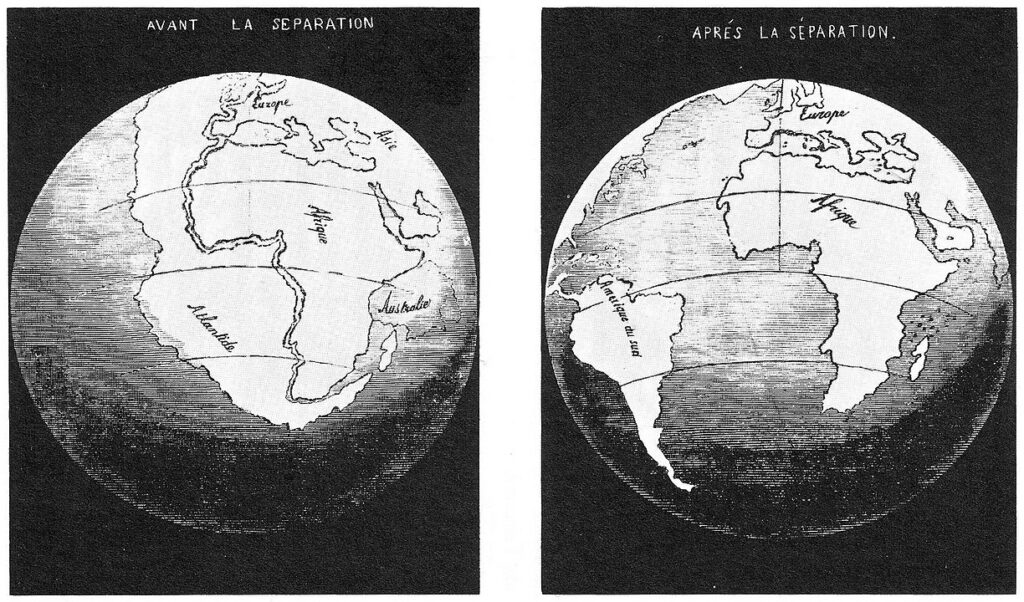
The first breakthrough in the quest to find answers to the mysterious driving force behind mountain building came in 1858. Antonio Snider-Pellegrini was one of the first scientists to suggest the earth’s crust broke apart during Noah’s Flood.2 He based this hypothesis upon his interpretation of the “fountains of the great deep” in Genesis 7:11. He also used geological observations that suggested separate land masses were once joined together. But the uniformitarian thinkers of the day rejected his theory. They preferred the assumption that natural laws and processes are the same as they have always been. They opposed the notion of rapid earth movements in favour of the thought that the continents were fixed.
Moving on a couple of centuries, Alfred Wegener incorporated uniformitarian principles into Pellegrini’s idea. His theory of continental drift affirmed that the continents were once joined together. However, unlike Pellegrini, he said they moved apart in small increments over millions of years to arrive in today’s configuration.3 This was an attractive theory to uniformitarian thinkers who needed long ages for their theory of evolution to hold up. However, this theory lacked a mechanism.
The Mechanism
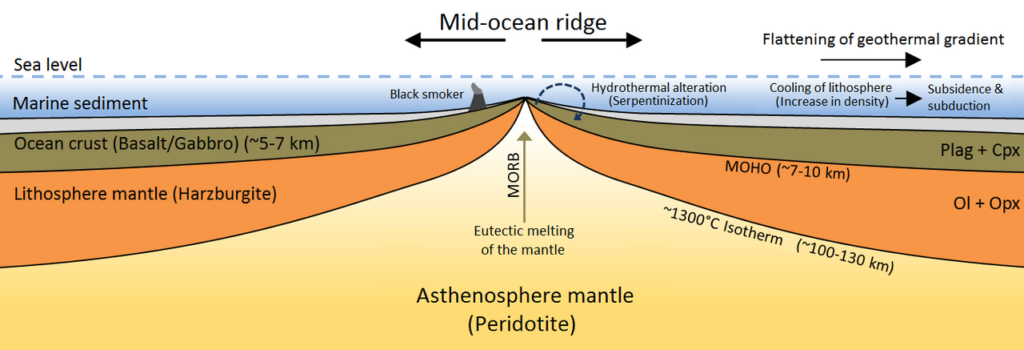
In the 1960s, access to new technology that could map the bottom of the ocean floor became available. Geologists discovered a mid-ocean ridge in the middle of the Atlantic. It paralleled the shape of the African and American continents on either side. Professor Harry Hess proposed that the ocean floor was separating and being pushed apart by the mantle which is moving around beneath. At the axis where the seafloor separates (called the spreading centre), new molten material rises up. It then cools and solidifies, forming new ocean floor.
The new ocean floor is warm, therefore less dense. This causes it to rise higher in the form of mid-ocean ridges on either side of the spreading centre. This process is known as the theory of seafloor spreading. Hess was the first to suggest that seafloor spreading was the driving mechanism behind crustal movements.4 With continued advancements in technology and an influx of research and interest in the field, the theory of plate tectonics soon pieced itself together.
The Theory of Plate Tectonics
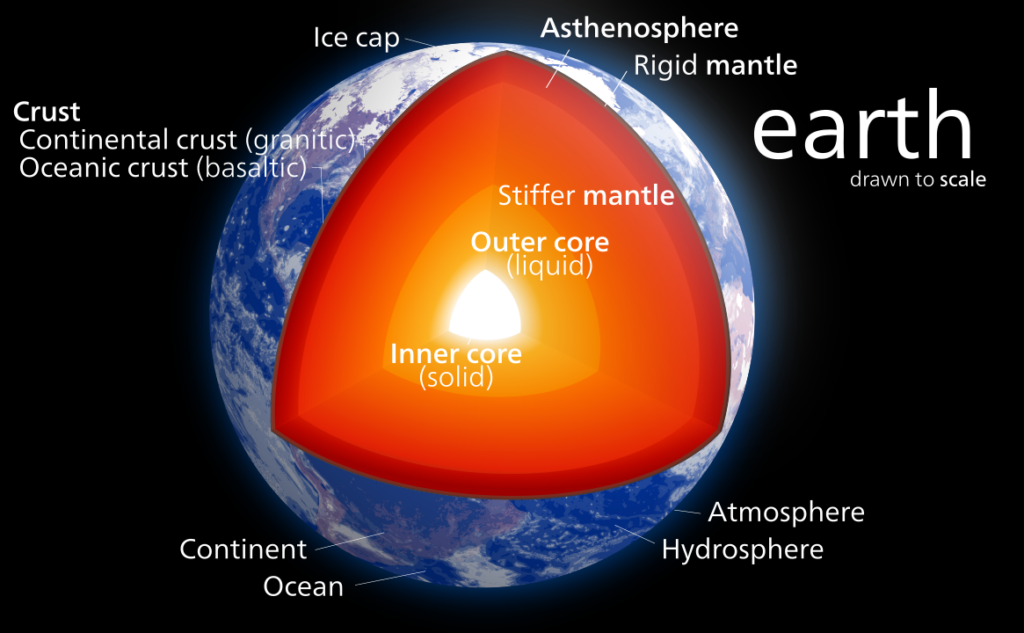
Four segments make up the interior of the earth: the inner core, the outer core, the mantle and the crust. The crust ‘floats’ on top of the hotter, denser mantle, which is circulating due to convection, causing the crust to move on top of it. The crust is divided into sections called tectonic plates. These plates can be oceanic or continental. Oceanic plates consist of denser material and make up the seafloor. The continental plates consist of lighter material and together they form the continents.
These plates interact with each other at plate margins (the boundary which separates two tectonic plates). Plate margins are marked by landforms such as mountain ranges, ridges, volcanoes and earthquake activity. This is due to plates sliding against one another, colliding into one another, pushing below one another, and/or pulling apart from one another. These movements cause the crust to bend, fold, and break; hence, the jumbled up mess of rock layers we see at these locations.
Today, tectonic plates are moving at the same pace as your fingernails grow. According to the secular theory of plate tectonics, plates have been moving this slowly throughout earth’s history.5 This uniformitarian way of interpreting the earth’s history has led secular theorists to conclude that the features we see at plate margins, such as mountain ranges, formed by slow moving tectonics over millions of years. However, taking a closer look at mountain ranges around the world, evidence would suggest that there was nothing slow about their formation!
Observations About Mountains

As previously said, mountain ranges are closely associated with plate margins. This has led geologists to assume that plate movements were and are the cause of their formation. However, in their book The Origin of Mountains Ollier and Pain, who are secular scientists, observed that the slow and steady plate tectonics theory does not suffice to explain many features found in mountain ranges.6
According to their observations of mountain ranges all over the world, Ollier and Pain realised that there were commonalities in their features and processes of formation that didn’t quite fit the secular narrative. Firstly, they observed that mountains consist of folded and faulted rock layers that have eroded down into a broad flat surface (a plane) before uplifting into high elevation plateaus (which are just high altitude planes). The interesting thing is that these planes did not experience the normal processes of erosion that one would expect to occur on a flat surface exposed to the elements over millions of years. Rather, these planes were uplifted without a scratch! Evidence shows that normal processes of erosion started to sculpt the flat surface into mountain peaks only after they reached their heights.
“Mountains” of Evidence
These observations suggest that normal rock layers distorted into folds and faults before a worldwide erosional event levelled the ground surface into a plane. These planes all over the world were simultaneously uplifted quickly enough to avoid the onslaught of natural erosional processes. These observations do not fit with the current secular model. The uniformitarian plate tectonics model says that high elevation mountain ranges formed by the slow movement of tectonic plates. Many geoscientists in the secular field hesitate to acknowledge this vast contradiction between their observations and their theory. Ollier and Pain give their reasons as to why this may be:
“Another problem arises from orthodoxy. Anyone who disagrees with the ruling theory is regarded as an ignorant fool by the majority, and authoritarian orthodoxy even goes so far as the suppression of publications that do not fit the orthodox scenario (nowadays plate tectonics) …”
Ollier and Pain, p. 314
The Creationist Solution
In 1994 a group of creationists published a paper that proposed an alternate model for earth history. The paper was “Catastrophic Plate Tectonics: A Global Flood Model of Earth History”.7
“Catastrophic Plate Tectonics” (or CPT) is similar to the conventional plate tectonics theory. However, it acknowledges that rates of tectonic movements were not uniform throughout earth’s history. Rather, the denser oceanic crust pushed beneath (subducted, see the image below) the continental crust at a “runaway” rate of metres per second. Creationists refer to this process as runaway subduction.8 They believe runaway subduction is the trigger and driving force of the yearlong Flood event recorded in the Bible (Genesis 6-7).9 The rapid subduction triggered the opening up of the seafloor which caused the continents to move around and collide into one another like jigsaw pieces around the globe.
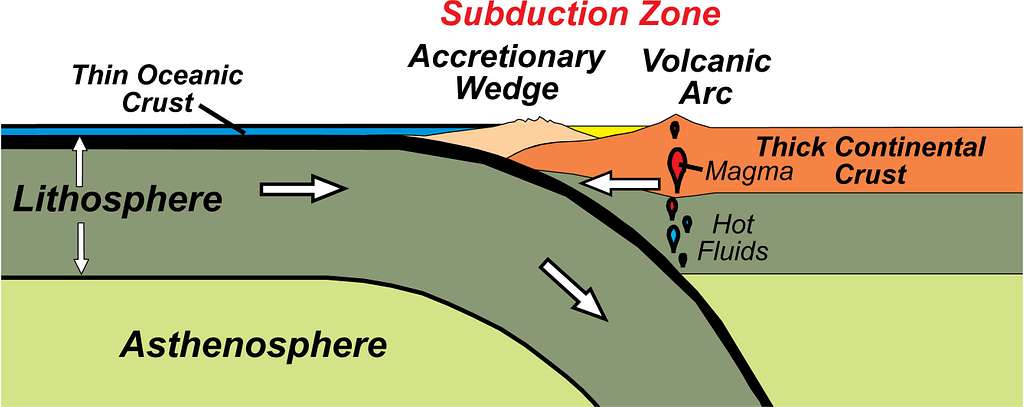
A Change in Topography
So, what does this have to do with the rapid simultaneous uplift of mountain ranges all over the world, you ask? Firstly, the Flood ripped up sediment and redistributed it around the globe. Sediment would have still been soft while the plates moved around. These plates would collide together, causing earthquakes. As a result the existing strata of these plates would have been deformed before it was uplifted.10
Then, as the ocean floor rapidly subducted beneath the continents, it pulled the continental crust downward with it. At the same time, part of the subducting oceanic plate smeared onto the bottom of the continental plate, making it thicker.11 This process is called underplating. The subducting ocean slabs partially melted in the burning hot mantle, which caused magma to shoot upwards into the crust above. Geologists call these features magmatic intrusions. As a result, the overlying continental crust increased in volume, or thickened. These processes forced the continental crust to sit lower into the mantle than it naturally would want to. We call this isostatic disequilibrium.
A Practical Example:

To help you visualise the principle of isostatic disequilibrium, think of the continents as floating ice cubes you push down into the water beneath by your finger. In this example, when you apply the pressure onto the ice cube, you can feel it pushing upwards beneath your finger. It wants to bob back up because it is less dense and needs to sit higher up on the water line to be stable. When you release the pressure, the ice cube compensates for the pressure decrease by quickly bobbing back up out of the water.
The same goes for the continents during the Flood. The pressure applied to the continental plate margins due to crustal thickening and the dragging downwards of its edges caused it to be pushed down into the mantle. Its new position was unstable.
The Rise of Mountains
The story then goes like this: During the Flood, the continents experienced much deformation due to moving tectonic plates. At the end of the Flood, the receding waters shaved off the top of these rugged continents. Their surfaces were now flat. However, the strata beneath still showed evidence of soft sediment deformation. By this time, the horizontal plate movements had come to a halt, therefore releasing the downward pressure on the thickened continental crust. The crust compensated by rapidly rising up out of the mantle in order to return to its preferred, stable position. After the quick rise, these high altitude planes (plateaus) became exposed to the elements. Normal processes of erosion then took place that sculpted them into the peaks and valleys we see in today’s high altitude mountain ranges.
This model has great explanatory power when it comes to the formation of today’s mountain ranges. Here is a summary of how the creationist model lines up with the observational evidence:
Observation #1:
The original rock layers that existed before the land was uplifted show signs of folds and soft sediment deformation.
Creationist explanation:
The year-long Flood caused catastrophic plate tectonic movements that pushed around soft sediment deposited by the Flood, causing folds to form in the original rock layers.
Observation #2:
The continents were levelled out into flat surfaces near sea level before they rose to their heights.
Creationist explanation:
The receding of the Flood waters at the end of the Flood accounts for the global levelling event.
Observation #3:
The crust underneath today’s mountain ranges is thicker than continental crust at lower elevation.
Creationist explanation:
Underplating and magma intrusions would have thickened the crust at plate margins where oceanic crust was subducting rapidly beneath the continental crust.

Observation #4:
The flat surfaces only dissected into peaks and valleys after they arrived at their current elevations, suggesting that the areas of thickened crust rose very quickly to their heights.
Creationist explanation:
When the horizontal plate tectonic movements ceased, the thickened crust would have responded to the dramatic pressure imbalance by rising quickly, not allowing time for the flat planes to be subject to normal rates of erosion. When they arrived at their heights, they experienced intense erosional processes and the volcanic and tectonic activity that would have still been in play after the Flood. These high elevation plateaus would quickly erode into isolated mountains at a faster rate than they do today.
Conclusion
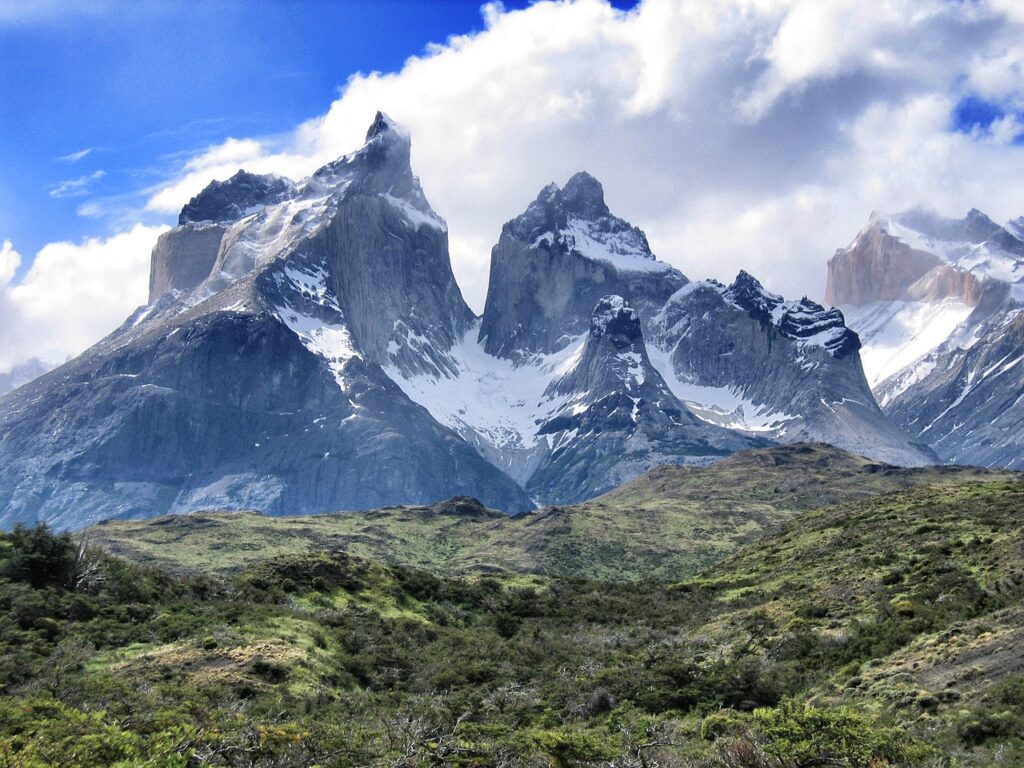
Like Snider-Pellegrini, creationists have taken Biblical and geo-physical observations into account for past geomorphological processes. As a result, they produced a model for mountain formation that explains many of the features of mountains that the secular model cannot.
This is encouraging for us! Why? It affirms that we can build our scientific theories on the rock of God’s Word, knowing that it is an accurate and reliable account of the history of the Universe. As we decide to trust His wisdom instead of our own preconceived ideas about the world, even the rocks cry out that His word is trustworthy and true! This area of study should give creationist scientists all over the world great confidence to keep building their scientific ideas and hypotheses on the solid rock of God’s word which never fails.
Footnotes
- Ollier, C. and C. Pain. 2000. The Origin of Mountains. Routledge, London. ↩︎
- Austin, S.A., J.R. Baumgardner, A.A. Snelling, L. Vardiman and K.P. Wise. 1994. “Catastrophic plate tectonics: a global Flood model of earth history,” pp.609-621 in: Walsh, R.E. (ed.), Proceedings of the Third International Conference on Creationism. Creation Science Fellowship, Pittsburgh, Pennsylvania. ↩︎
- Wegener, A. (1966). The origin of continents and oceans (4th edition). (J. Biram, Trans.). New York: Dover Publications, p.17. ↩︎
- Hess, H. 1962. History of ocean basins, pp.599–620 in: Engel, A.E.J., H.L. James and B.F. Leonard (eds.), Petrologic Studies: A Volume in Honor of A.F. Buddington. Geological Society of America, Boulder, Colorado. ↩︎
- Baumgardner, J.R. 2005. Recent rapid uplift of today’s mountains. Impact 381:i-iv. ↩︎
- Ollier, C. et al. 2000. (Footnote 1). ↩︎
- Austin, S.A., et al. 1994 (Footnote 2). ↩︎
- For a more detailed description of the mechanism of runaway subduction, see the technical paper below. ↩︎
- Baumgardner, J.R. 1994. “Runaway subduction as the driving mechanism for the Genesis Flood,” pp.63-86 in: Walsh, R.E. (ed.), Proceedings of the Third International Conference on Creationism. Creation Science Fellowship, Pittsburgh, Pennsylvania. ↩︎
- Austin, S.A., Baumgardner, J.R., Snelling, A.A., Vardiman, L. and Wise, K.P. 1994. Catastrophic plate tectonics: a global Flood model of earth history. pp.609-621 in: Walsh, R.E. (ed). Proceedings of the Third International Conference on Creationism. Creation Science Fellowship, Pittsburgh, PA. ↩︎
- Baumgardner, J.R. 2003. “Catastrophic plate tectonics: the physics behind the Genesis Flood,” pp.113-126 in: Ivey, R.L., Jr. (ed.), Proceedings of the Fifth International Conference on Creationism. Creation Science Fellowship, Pittsburgh, Pennsylvania. ↩︎


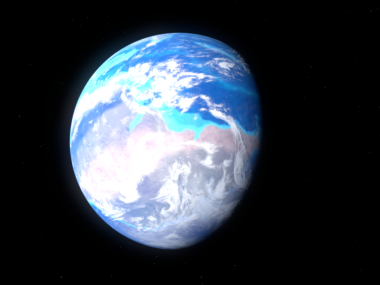

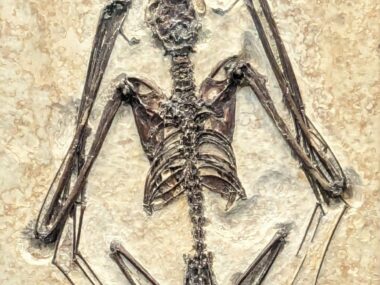







This was a well done article. the knowledge and articulation of same were proof of a excellent teacher. I don’t think any preflood mountainjs remain. so the mountains were created by two ways. The flood year stuff. The second way is for minor post flood reactions in the continents that may of creatdd the backbone mountains up and down the Americas.
It would be very interesting to see a 3D simulation to see how the mountains were formed after the flood. or at least to get an idea of what it could have been like.
The single continent was broken up and the parts smashing into each other is how the mountains were formed during the flood year. Possibly some independent uplift also. after the flood I suggest the americas wrre raised/lowered and this might of made mountains also. All in a few days.
Wegener (not Wagner) wrote several decades after Snider Pellegrinni, not a couple centuries later. Also, although this is probably still a debated issue, recent research is suggesting that the earth’s plates move because of seafloor spreading rather than mantle convention. Otherwise, a good article!
I thought I posted a reply here, but to restate the original one…
There is not even one mention of the heat problem in this article. It’s all fine to suggest this hypothesis, but one should present those parts that work against it. Answers in Genesis even published a paper this past year admitting that there is (at present) no known mechanism for dissipating the various sources of heat that would be released in the CPT model. The total output would probably melt the crust. Until a plausible mechanism can be proposed and evidenced for this issue it would seem unreasonable to promote this hypothesis/model.
Thank you, Ted, for your valuable input. We plan to write an entire article that specifically covers the heat problem, rather than incorporating it into every relevant piece. This approach provides us with somewhere to link to in other, related articles on site.
And yes, you’re correct that the heat problem does not have a definitive solution at this time. However, this doesn’t necessarily warrant complete abandonment of the CPT. Scientists don’t discard models solely due to unexplained facets. If that were the case, the “continental drift” model would have been dead upon arrival. Scientific models inherently present incomplete views of reality and often struggle to explain certain pieces of data, especially when they’re relatively new. Dismissing CPT in response to the heat problem merely exchanges one set of challenges for another.
It’s often said, ‘All models are wrong, but some are useful.’ Embracing the most promising scientific models is crucial. Despite its unresolved issues, such as the heat problem, many young-earth geologists think that CPT remains the most useful model in explaining a significant portion of Earth’s geology. While flawed in its current form, we believe in leveraging its utility and exploring its potential to advance our understanding of our planet’s history.
Hello Christian, thanks for the reply.
The heat problem is not just a something that is a small tweak to CPT to suddenly strengthen the theory. It is the primary stumbling block to the scenario and must be dealt with, really before any further advancement.
But in the context of this article, I think it is should be considered a fair disclosure that the theory does have some serious deficiencies. The article more or less presents CPT as a foregone conclusion.
Overall, I appreciate that you and other authors here tend to be way more nuanced and even-handed about the scientific evidence.
For some personal context and where my interest lies, I am a Christian, and I am a professional geologist (almost 30 years) working in the minerals exploration industry. You probably figured out already that I am not an adherent to young earth creationism.
Cheers.
The Origin of Mountains, by Cliff Ollier and Colin Pain should be required reading for all who are developing views on Plate Tectonics. The most significant issue, in my opinion, is that folding of rocks precedes uplift to form mountains. This is a major challenge to those who think that folding and uplift are contemporary. This then leads to a scepticism of Plate Tectonics and the recognition that passive margins of tectonic plates also have mountains. Consequently, I find a tension in this blog between the plug for the book by Ollier & Pain and the endorsement of catastrophic plate tectonics. Although the Andes is the poster child for the PT model of mountain formation, Ollier & Pain show that it can be critiqued and that the field evidence is not such a good fit with theory. More recently, people have invoked a double subduction model as they wrestle with the problems. Creationists do need a global theoretical model of mountain building, but we are not there yet. When we get it, it will not involve a massive surge of heat energy (that would be enough to melt the crust), and it will address the heat problem – Ted V. is not alone in his concerns about this.
I am very interested in earth changes after the flood. I would like to dialog with you about this. I have read Ollier and Pain quite extensively.